|

by Kate Whitehead
February 20, 2020
from
SouthChinaMorningPost Website
Information sent by
MJGdeA
Spanish version
Italian
version
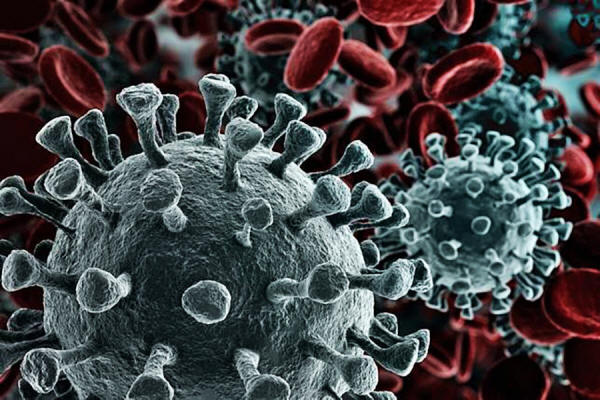
Much has been made of Dean Koontz's
1981 book The Eyes of Darkness
which appeared to have predicted the
recent coronavirus outbreak...
but the original villain was Russia, not China.
Photo: Shutterstock
Dean
Koontz's 'The Eyes of Darkness'
originally
contained details of
a man-made virus
called
'Gorki-400' from
the Russian city of Gorki.
The change to 'Wuhan'
came when the
book was released in hardback
under Koontz's
own name in 1989,
at the end of
the Cold War...
The 1981 book by US
thriller writer Dean Koontz that appeared to predict the
coronavirus outbreak in China
initially had the virus originating in Russia.
The book appears to have been rewritten after the collapse of the
Soviet Union meant the country was no longer seen as a communist
bogeyman.
Koontz's 'The Eyes of Darkness'
made headlines in the past week after readers noted the story
concerned a man-made virus called Wuhan-400 developed in,
a biological weapons
lab in Wuhan "ground zero of the current coronavirus outbreak"
and described as the "perfect weapon".
"They call the stuff 'Wuhan-400' because it was developed at
their RDNA labs outside the city of Wuhan, and it was the
four-hundredth viable strain of man-made organisms created at
that research centre," Koontz writes in the book.
However, Wuhan wasn't
even originally mentioned in The Eyes of Darkness.
The first edition of the
book, written under Koontz's pseudonym Leigh Nichols,
concerns a virus called Gorki-400 that was created by the
Russians and emerged from "the city of Gorki".
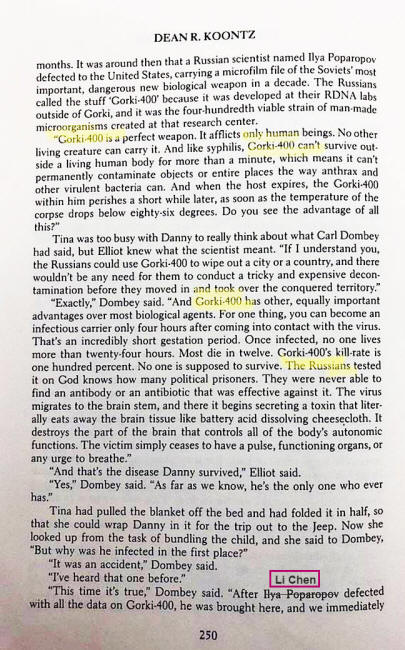
Excerpt from 1981 edition of
The Eyes of Darkness.
The change to Wuhan came when the book was released in hardback
under Koontz's own name in 1989.
The year of the book's
re-release is significant:
1989 marked the end of the Cold War.
And
with the collapse of the Soviet Union, the country was no longer
'communist'...
"Starting in 1986,
relations between the US and the Soviet Union began improving,"
says Jenny Smith, co-founder of indie bookshop Bleak House Books
in Hong Kong and a student of Russian history.
"Mikhail Gorbachev
came in in 1985 and was very interested in making the Soviet
Union a more open society and improving relations.
By 1988, it is our
friend and not our enemy."
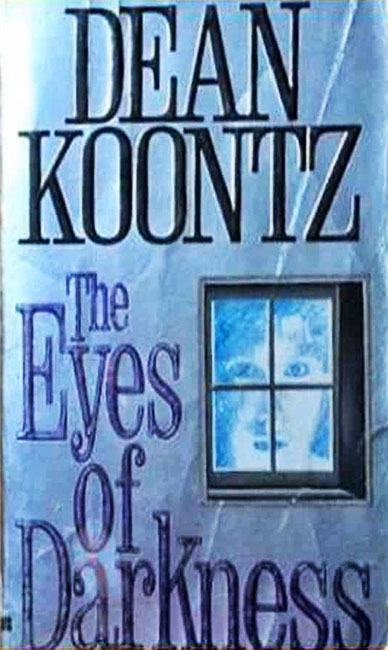
Cover of the 1981 edition of
The
Eyes of Darkness.
An American author pointing the fictional finger of blame at Russia
would not have gone down well in that climate, so The Eyes of
Darkness needed a new villain.
There were only so many
places with bio-weapons facilities "think France, Britain and Japan"
and most, as far as the US was concerned, were the good guys.
"China is the only
place that comes to my mind that would have had an active
program and it's likely there was a deep suspicion (in the US)
of China covering a lot of things in this period," says Smith,
who wrote her PhD on Soviet technology at the Massachusetts
Institute of Technology in the United States.
This was in the immediate
aftermath of the 1989 student demonstrations and the bloody
Tiananmen crackdown that followed.
It was a period when
there were rumors swirling about leaks and cover-ups at biological
weapons facilities, says Jenny Smith, and the US would have
been aware of the repression of these rumors.
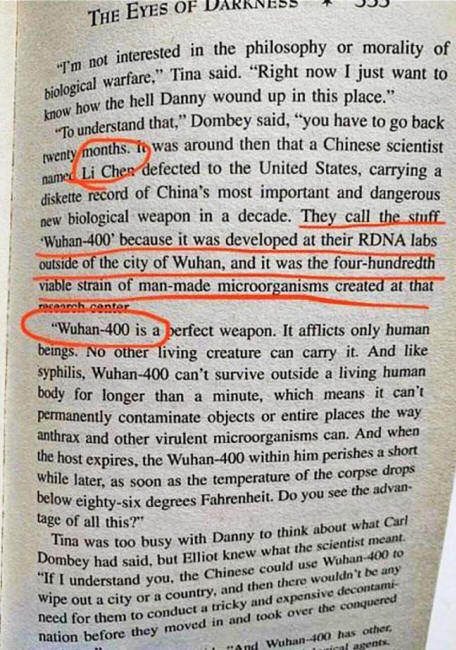
Excerpt from a post-1989 edition of
The
Eyes of Darkness.
The switch from 'Gorki-400' to 'Wuhan-400' in the book was
a literal cut-and-paste and appears to reflect the shift in
mentality after the Cold War.
"Everyone was
thinking in terms of two great powers, America and the Soviet
Union, the good guys and the bad guys. It's easy to see how you
might substitute one bad guy for another, Gorki for Wuhan," says
Smith.
It is not known whether
Koontz himself requested this change or his publisher made it.
Emails to Koontz, his
literary agent and publisher have gone unanswered.

Author Dean Koontz in 2019.
Photo:
Douglas Sonders
Leigh Nichols wasn't the only pen name Dean Koontz wrote
under in his early career.
He also used David
Axton, Deanna Dwyer and K.R. Dwyer.
"It's not unusual to
use a pen name when you are starting off in your career. To play
it safe, you don't want to be as exposed," says Albert Wan,
Smith's husband and the co-founder of Bleak House Books.
"When his books
started to take off in popularity, he may well have decided to
use real identity."
As for the Gorki
referenced in the book, it could be one of a number of Russian towns
with that name.
The largest, just south
of Moscow, is home to 3,500 people today. Compare that with Wuhan,
with its population today of more than 11 million - even in 1989,
Wuhan's population topped 3.3 million.
The revised edition of The Eyes of Darkness brought the book
closer to possibility, but it's still some way off what's happening
with
Covid-19.
Significantly,
contracting the fictional Wuhan-400 is a certain death
sentence, while only 2 per cent of Covid-19
cases are fatal.
"It might run as
science fiction, but it's not impossible as it has happened in
the past and people would be aware of it," Smith says.
"Think of the
cover-up over anthrax - a lot of these stories are stranger than
real life."
Meanwhile, readers are
also pointing to a passage in a book (End
of Days - Predictions and Prophecies about the End of the World)
by the late Sylvia Browne, an American author who claimed to
be psychic, that predicted an international outbreak of a virus this
year.
"Around 2020, a
severe pneumonia-like illness will spread throughout the globe,
attacking the lungs and the bronchial tubes and resisting all
known treatments," Browne wrote in the book End of Days.
"Almost more baffling
than the illness itself will be the fact that it will suddenly
vanish as quickly as it arrived, attack 10 years later, and then
disappear completely."
Source
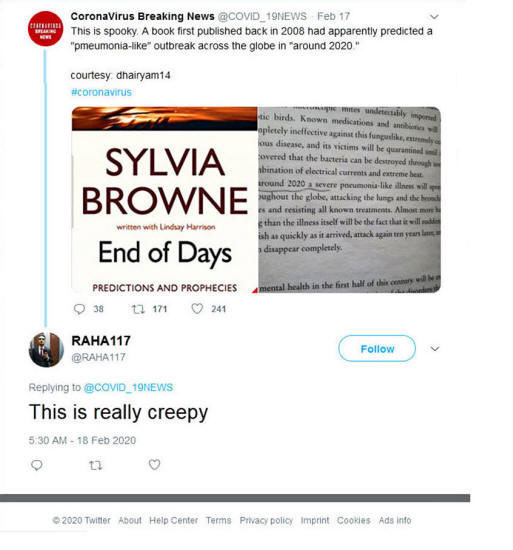
Source
PDF version
| 






